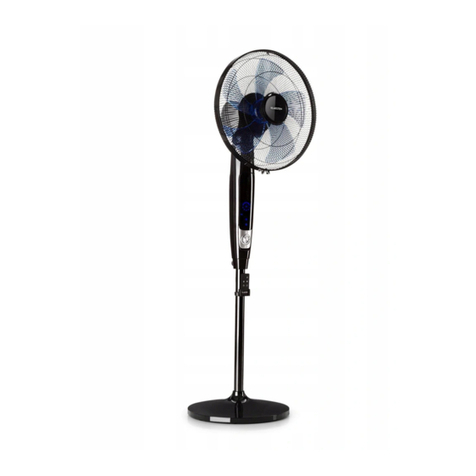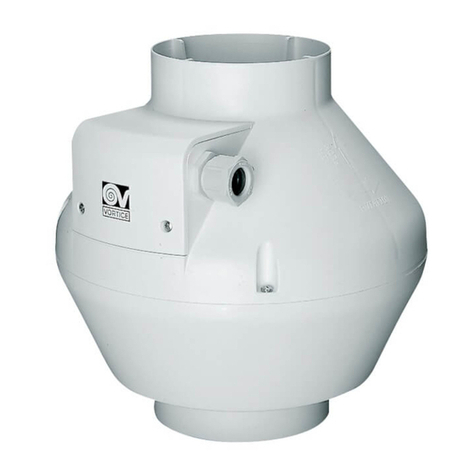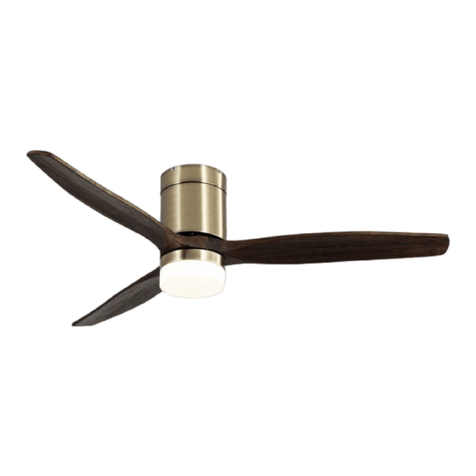Star Refrigeration Azanechiller User manual

Azanechiller Installation Instructions
G:\Design\Standard Azanechiller 2.0\01 Design\O & M Manual\Issued\012 Installation Instructions\Azanechiller Installation
Instructions.F.docx Page 1 of 8
1.0 Receipt of Unit
When the unit is delivered to the jobsite, it should be checked thoroughly to ensure all
required items have been received and are free of any shipping damage prior to signing
the packing note. Any damage or missing items must be indicated on the packing note,
and Star Refrigeration Ltd must be informed of such.
2.0 Design Conformity
Star certify that the Azanechiller conforms with the following EC Directives:
Machinery Directive (MD) 2006/42/EC
Pressure Equipment Directive (PED) 2014/68/EU
Pressure Equipment Regulations (PER) 2016
Electromagnetic Compatibility Directive (EMC) 2014/30/EC
Low Voltage Directive (LVD) 2014/35/ED
Ecodesign Directive (ED) 2009/125/EC& 2015/1095
To comply with these directives appropriate national and harmonised standards have
been applied. These are listed on the Declaration of Conformity, supplied within the
Quality Dossier for each plant.
Before using the chiller, the recommendations set out in the Operating & Maintenance
Manual must be read.
3.0 Chiller Positioning for Efficient Operation
3.1 Chiller Location
The unit must be located away from air vents into buildings. The unit must be placed
in an area which only affords access to competent operators and technicians. Access to
the unit by the general public must be prevented. The supporting base upon which the
chiller will sit must be level (tolerance 10mm on both axes) and solid enough to support
the chiller weight during normal operation.
If the chiller raised via steelwork or AV mounts, a suitable walkway/working platform
should be considered to allow both personnel access for servicing and removal of
equipment.

Azanechiller Installation Instructions
G:\Design\Standard Azanechiller 2.0\01 Design\O & M Manual\Issued\012 Installation Instructions\Azanechiller Installation
Instructions.F.docx Page 2 of 8
3.2 Air-Flow Requirements
In order to operate efficiently, the condenser requires good air-flow onto the condenser
fins.
The area available for fresh air to reach the condenser fins (with horizontal and
vertically upward flow only) must be greater than or equal to the air on face area of
all condensers drawing air from this space.
The combined area (free area between the condensers at the ends) must be at least
equal to the combined total condenser air on face area.
In all cases the area above the condenser fans, from where air could be drawn down into
the fins, must not be included in the calculation.
If the air flow requirements are almost met then bridging plates must be mounted
between the condensers to stop warm air from the fans recirculating back onto the
condenser. This will help ensure performance of the chillers.
If the free area available is far less than that which is required, then the condensers must
be raised or an alternative location must be found for the condensers.

Azanechiller Installation Instructions
G:\Design\Standard Azanechiller 2.0\01 Design\O & M Manual\Issued\012 Installation Instructions\Azanechiller Installation
Instructions.F.docx Page 3 of 8
3.3 Handling & Lifting
The following is intended as guidance only; all lifting and positioning should be assessed
on an individual basis and must be carried out by qualified experts. The chillers are
designed for overhead lifting. To ensure that all lifting and handling operations are carried
out safely, the following precautions must be implemented:
The only safe lifting method for the chiller is to use the permanent lifting lugs
attached to the baseframe –these must be used for all lifting operations. Do not
use any other lifting points on the unit.
On de-commissioning or moving an old chiller the condition of the lifting lugs and
the baseframe must be inspected and checked by a professional engineer if there
are any signs of corrosion
Lifting must not be carried out with equipment that is inadequate or not in perfect
working order.
Do not tilt the chiller more than 15oduring handling.
Before handling, check that all the removable panels are fastened tightly and the
access door is properly closed.
Use spreader bars to keep the lifting cables or chains clear of the chiller.
Do not use fork-lifts to lift the unit from below.
If overhead lifting equipment is not available, the chiller may be moved on rollers.
Ensure that lifting equipment is suitable for the weight of the chiller stated on the
Diagram of Connections drawing (section 11 of this manual).

Azanechiller Installation Instructions
G:\Design\Standard Azanechiller 2.0\01 Design\O & M Manual\Issued\012 Installation Instructions\Azanechiller Installation
Instructions.F.docx Page 4 of 8
4.0 Secondary Fluid Connections and Requirements for Efficient Operation
The chiller is supplied with PN16 flanges to connect up to the client’s secondary fluid
circuit. To maintain efficient chiller operation and to protect the chiller from damage, the
following requirements must be met:
Water quality should must meet the following, as specified by the evaporator
manufacturer:
The fluid flowrate and temperature requirements stated in the plant specification
section of the Operating & Maintenance Manual must be maintained in order for
the chiller to provide the desired cooling.
Should the water be particularly dirty or aggressive, an intermediate heat
exchanger must be placed between the aggressive media and the chiller.
The connecting pipes must be adequately supported so as not to weigh on the
unit.
The following must be installed in the secondary fluid circuit:
Air vent valves to be fitted at the highest points of the circuit.
Flow switch to be fitted at outlet of unit. This must be fitted into the side of a
horizontal, straight section of pipe of length at least equal to 8 times the pipe
diameter with 5 straight diameters upstream and 3 straight diameters
downstream. The flow switch must be calibrated at commissioning to allow at
least the minimum required flow to the chiller.
One shut-off valve each at inlet and outlet of the chiller.
Where the chiller is used in noise sensitive buildings and where the chiller is
mounted on anti-vibration mounts, vibration joints at inlet and outlet of the chiller
is required, to be fitted horizontally. Site pipework should also be installed in an
arrangement capable of accommodating movement of the chiller on its anti-
vibration spring mounts.
Important - pipework should be either cleaned and thoroughly inspected before
piping up to the Azanechiller or a mechanical filter with a maximum mesh size of
1mm must be fitted as close as possible to the chiller inlet. If the pipework is
flushed clean, a temporary strainer is to be fitted to the fluid inlet.
A drain valve at the lowest point of the circuit.

Azanechiller Installation Instructions
G:\Design\Standard Azanechiller 2.0\01 Design\O & M Manual\Issued\012 Installation Instructions\Azanechiller Installation
Instructions.F.docx Page 5 of 8
5.0 Electrical Installation
5.1 Electricity Supply
The specifications of the mains supply must comply with the standards EN 60204-1 and
be sufficient for the absorption requirements of the unit. The mains supply voltage must
correspond to the rated value 10%, with a maximum phase difference of 3%. Refer to
local regulations.
5.2 Power Connections
Install a circuit breaker device, not included with the chiller, in the supply line of
the switchboard feeding the chiller in compliance with the regulations in force.
Supply chiller unit control panel with a cable with an appropriate diameter for unit
absorption. The control circuit is shunted off the power circuit from inside the
switchboard.
Do not touch hot and/or sharp surfaces. It is forbidden to lay electric cables in
positions that have not been specifically identified.
If the secondary refrigerant fluid is water without an appropriately strong glycol
mix or other freezing point suppressant the trace heating power supply must
never be disconnected if the ambient temperature could fall below 0C, except
during maintenance operations, or when the water circuit has been isolated and
drained, in order to guarantee operation of any trace heating on the heat
exchanger.
5.3 Control Circuit Interlocking
In order for the guarantee to be valid:
Connect the calibrated flow switch to the specific terminals of the control circuit (if
not included in the standard supply).
Connect the auxiliary pump contacts to the chiller enable circuit of the control
circuit.

Azanechiller Installation Instructions
G:\Design\Standard Azanechiller 2.0\01 Design\O & M Manual\Issued\012 Installation Instructions\Azanechiller Installation
Instructions.F.docx Page 6 of 8
6.0 Safety Precautions
6.1 General Hazards
This chiller contains ammonia (R717) which is a toxic gas and is potentially
explosive. Maintenance and service work must only be carried out by trained
personnel who hold the appropriate ammonia handling certificate.
Site personnel should be informed of the chiller location and that it contains
ammonia. If a person suspects an ammonia leak, they should highlight this as
per site procedures and site emergency response plan.
The mains power supply must correspond to the specifications indicted on the
control panel door.
The unit must be destined solely for the use for which it was designed. The
manufacturer shall not be under any obligations whatsoever for uses differing
from the specified use.
Pressure relief line must be installed pointing upwards, away from building air
intakes and with a suitable rubber pipe guard or other means of determining
valve has lifted.
Switch off the unit in the event of a breakdown or faulty operation.
Do not supply the heat exchangers with any liquids except water, glycol or an
approved alternative. Never exceed the maximum allowable pressure of the
secondary fluid circuit indicated on the Diagram of Connections (section 11 of this
manual).
The machine packaging can be dangerous. Keep out of the reach of children.
The operator or other un-trained staff must limit him/herself to the controls of the
unit only; the only panel that can be opened by him/her is the one that accesses
the PLC Human Machine Interface (HMI) –no other must be touched.
Do not use your hands to check possible pressure leaks.
Always use tools that are in good condition; ensure familiarity with the
instructions before putting them into practice.
All tools, electrical cables or loose objects must be removed before closing and
starting the unit again.
The machine must not be installed in an explosive atmosphere.
The machine must not be installed in environments with electromagnetic fields
exceeding those envisaged by the Electromagnetic Compatibility Directive
89/339.
The door should not be allowed to swing free in windy conditions or if the chiller is
operating.
6.2 Control System Hazards
Make sure that the instructions have been fully understood before carrying out
any work on the control panel.
Start the unit only after having made sure that the power supply cable has been
perfectly connected to the chiller’s electrical panel and tested.
Do not reset the manual reset alarms without first having identified and removed
the cause.

Azanechiller Installation Instructions
G:\Design\Standard Azanechiller 2.0\01 Design\O & M Manual\Issued\012 Installation Instructions\Azanechiller Installation
Instructions.F.docx Page 7 of 8
6.3 Mechanical Hazards
Install the unit according to the instructions set out in this manual.
The maintenance schedule in the Operating & Maintenance Manual must be
adhered to.
Do not touch the condenser fins without first having put on protective gloves.
Do not remove the fan guards while the chiller’s electrical panel isolator is
switched on.
Make sure that fan guards are fitted correctly before putting power onto the
chiller.
6.4 Electrical Hazards
Connect the unit to the mains electricity supply.
Disable the unit from the mains using the electrical panel isolator before opening
the control panel.
Check that the unit has been grounded (earthed) correctly before starting it.
Make sure all the electrical connections are firmly tightened and check the
connecting cables, paying special attention to the state of insulation; replace all
cables that are clearly worn and damaged.
Periodically check the cables that are inside the panel.
Check that all the circuit breakers are switched ON.
Do not use cables with inadequate sections nor extension cord connections, even
for very short periods or emergencies.
6.5 Other Hazards
Connect up the utilities to the unit following the indications set out in this manual
and on the panelling of the unit itself.
Check all connections for wear and tear. These parts must be safely guided,
supported and anchored. Make sure all the connections are correctly tightened.
If a part needs to be dismantled, make sure it is correctly re-assembled before
starting the unit.
Do not touch the compressor delivery piping, the compressor and any other
piping or component placed inside the unit without first having put on protective
gloves.
Keep at hand a fire extinguisher suitable for electrical appliances. Check it and
have it serviced as recommended on the instructions plate.
Do not store flammable liquids near the unit.
Weld only with empty pipes; do not bring flames or other sources of heat near
pipes containing refrigerating liquid.
Do not bend or hit pipes containing pressurised fluids.
Ammonia has a pungent smell. All air inlets to any building near the chiller must
be moved or the unit should be relocated. For further guidance please contact
Star Refrigeration.

Azanechiller Installation Instructions
G:\Design\Standard Azanechiller 2.0\01 Design\O & M Manual\Issued\012 Installation Instructions\Azanechiller Installation
Instructions.F.docx Page 8 of 8
6.6 Condenser Fan Isolation
Groups of condenser fans can be isolated at the MPCBs in the panel. If isolation is
required all MPCBs must be padlocked in the off position.
A grey tab on the underside of the black switch can be pulled down. This reveals a hole
through which a padlock can be placed to lock the MPCB in the off position. This can be
seen on the photo of MPCBs –one showing the tab concealed, and one with the tab
pulled down.
Note: If the chiller is required to run when one of the fans has faulted, the following steps
should be followed:
Isolate all fans at the MPCBs in the panel.
Disconnect the fan on fault at the panel terminals.
The opening should be covered over for the non-running fan(s) to prevent air
getting drawn through in the wrong direction.
The fans that have not faulted can then be made live again.
Table of contents
Popular Fan manuals by other brands
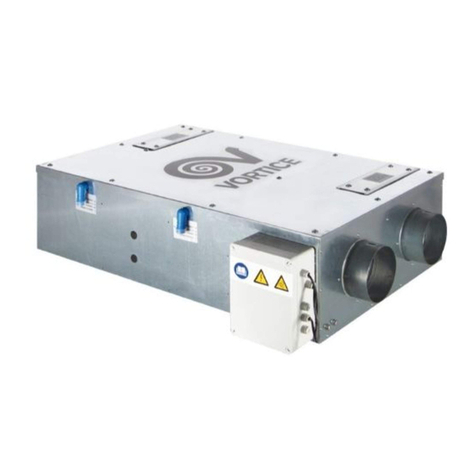
Vortice
Vortice VORT HRI 200 FLAT IoT Instruction booklet

Westinghouse
Westinghouse Longo owner's manual
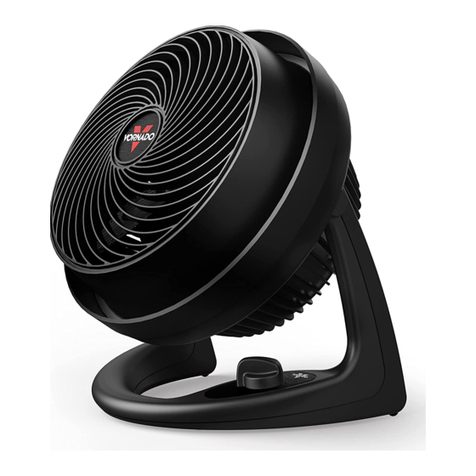
Vornado
Vornado 620 owner's guide

Ventamatic
Ventamatic BIG AIR HVFF20BA Instruction & owner's manual

Casablanca
Casablanca Nouvelle owner's manual
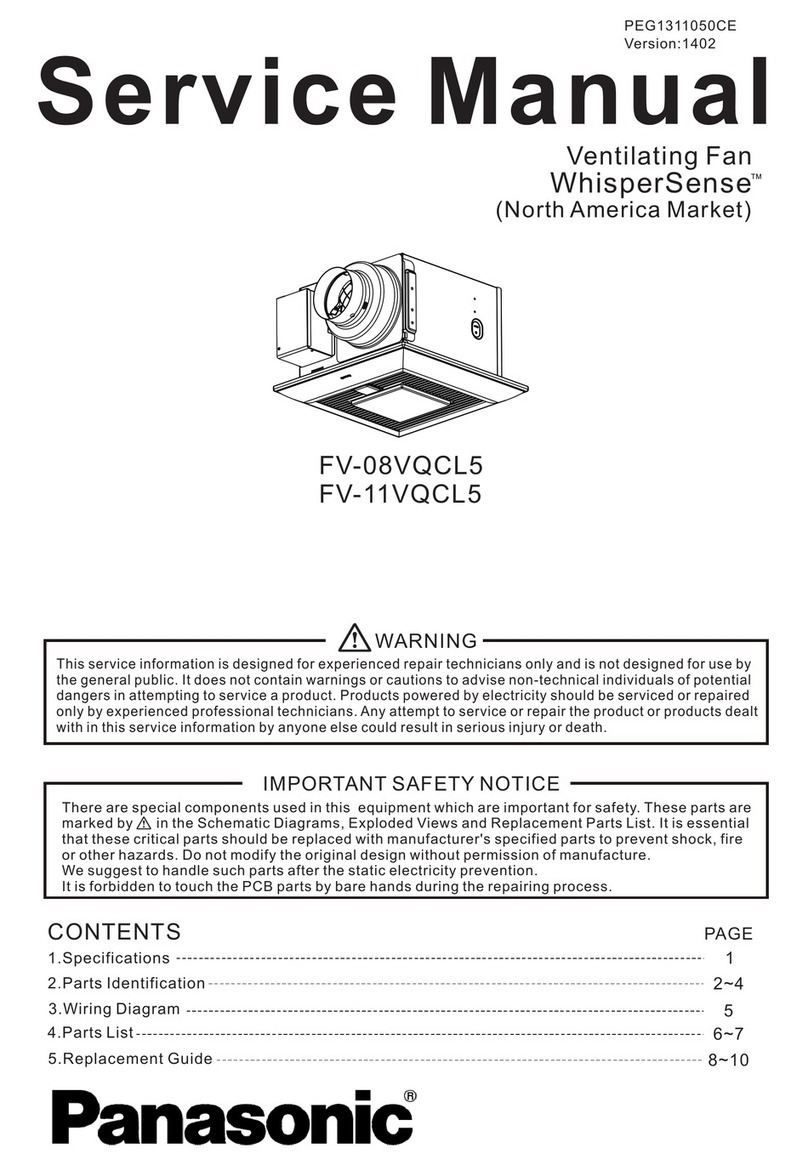
Panasonic
Panasonic WhisperSense FV-08VQCL5 Service manual
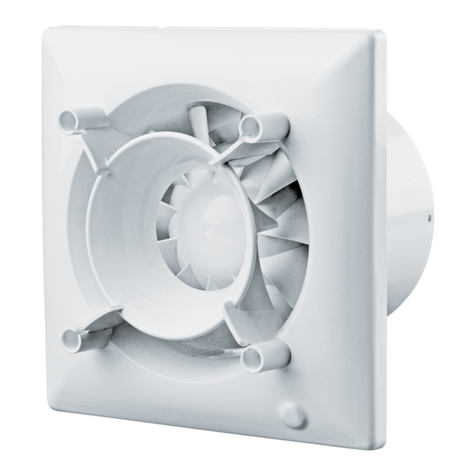
BLAUBERG Ventilatoren
BLAUBERG Ventilatoren Omega Series user manual

Casablanca
Casablanca ESTRADA owner's manual
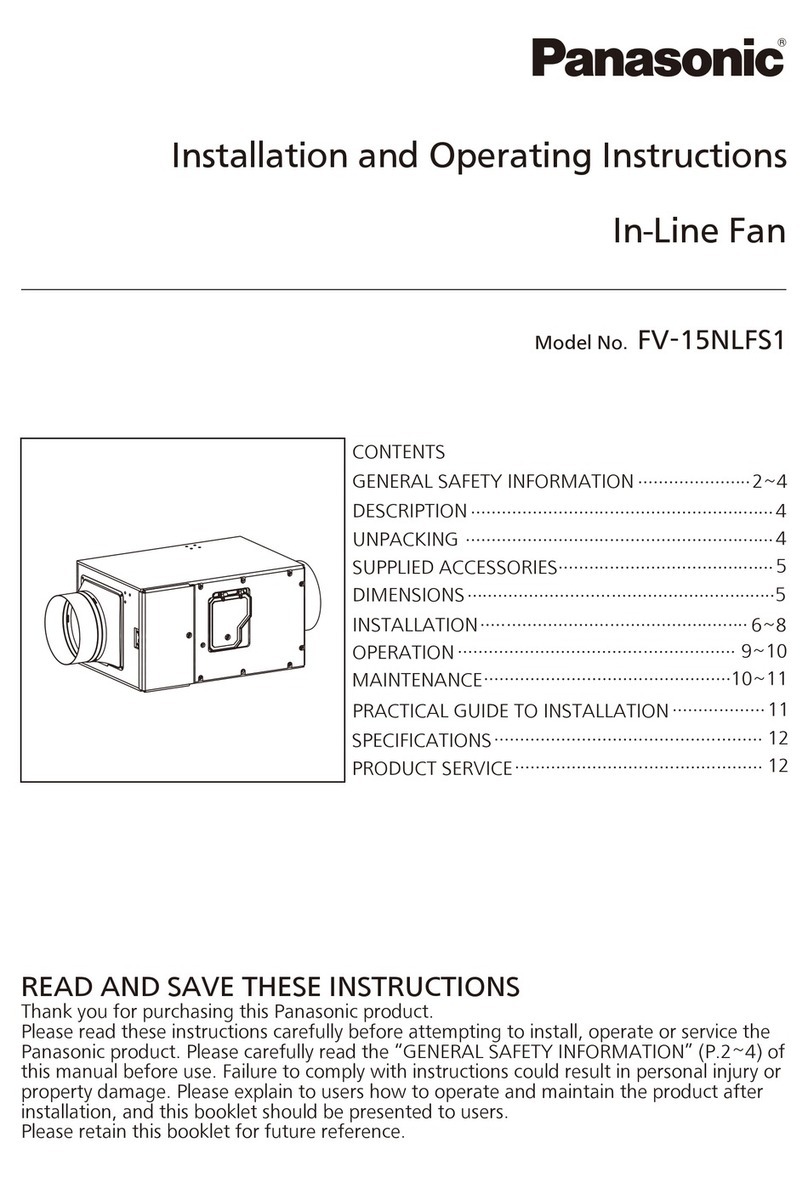
Panasonic
Panasonic FV-15NLFS1 Installation and operating instructions

Lfans
Lfans L4 manual

OSTBERG
OSTBERG RS Installation operation & maintenance
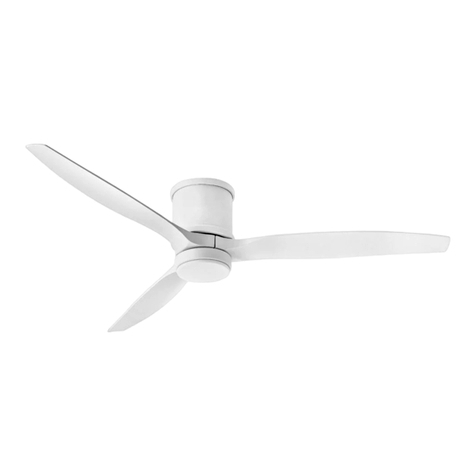
Hinkley
Hinkley HOVER FLUSH 900860FMW-LWD instruction manual


